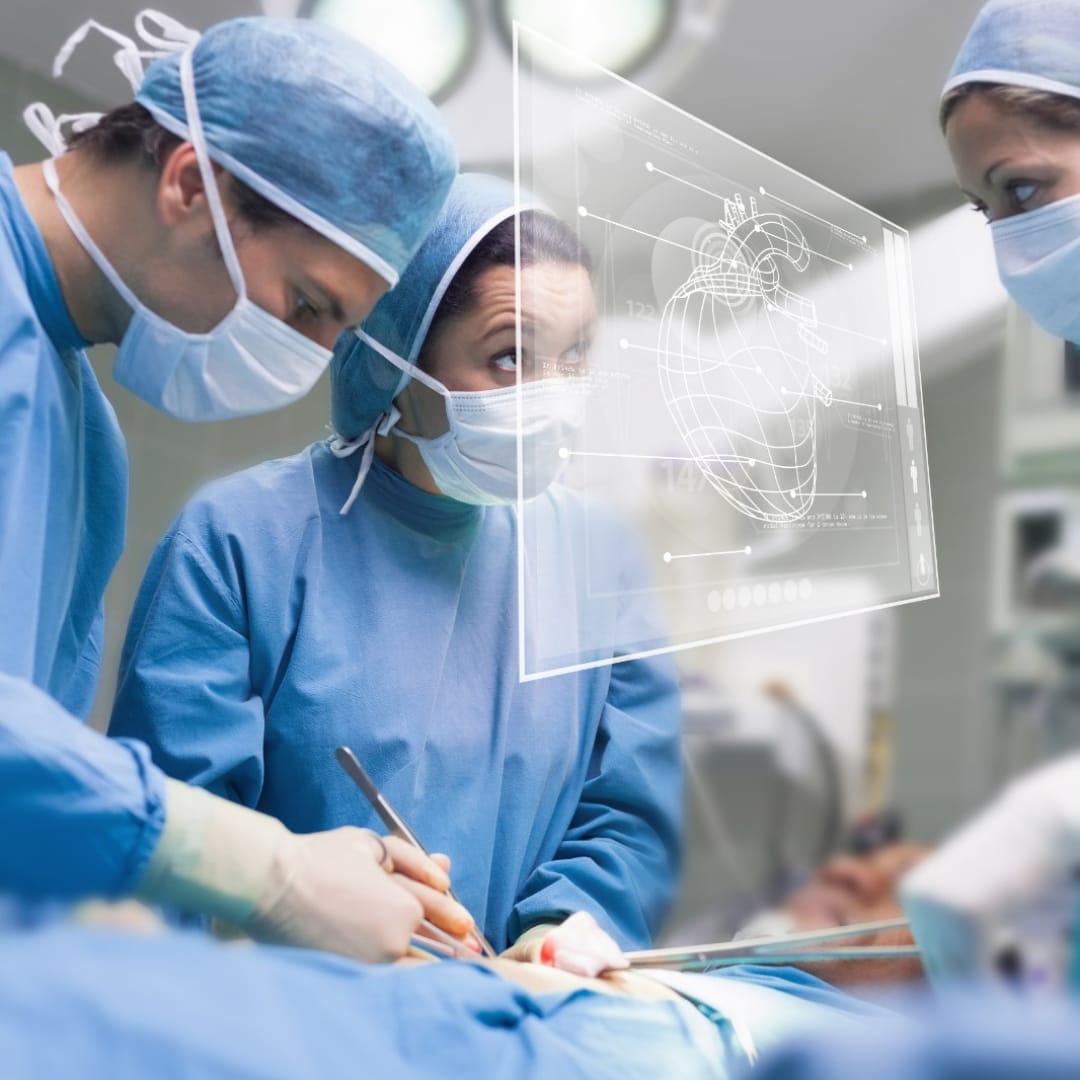CARDIOVASCULAR DISEASES
The most common cardiovascular disease is the narrowing or complete blockage of the heart vessels, which we call coronary artery disease.
Operations We Perform in Our Cardiovascular Surgery Department at our Center:
Coronary Bypass:
When the narrowing of the coronary arteries, which causes a heart attack, exceeds a certain level, it blocks the flow of blood. The surgical procedure performed to eliminate this problem is called coronary bypass surgery. A large percentage of heart surgeries are interventions performed through bypass surgery for coronary artery occlusions.
Coronary bypass surgeries are surgeries performed on the working or beating heart using the patient's own vessels, usually taken from the chest and leg, in order to bypass the blocked section.
Heart Valve Surgeries:
In case of stenosis or insufficiency of the valves in the heart, the existing heart valve is repaired and replaced in cases that are not suitable for repair.
Armpit Valve Surgeries:
All heart valve surgeries can be performed through a small incision under the armpit. As a result of this procedure, patients complete the recovery process very quickly and return to normal life.
Surgeries to block arm and leg arteries (peripheral vascular surgery): It is performed using small incisions or artificial vessels taken from the patient. In addition, in many of these types of vascular occlusions, the occlusion is eliminated by applying a balloon or stent via groin angiography, without the need for surgery.
Aneurysm (ballooning) is usually repaired without the need for surgery with the help of groin angiography. Patients who are not suitable for this method undergo surgical intervention and aneurysm repairs are performed.
Jugular vein surgeries (Carotid artery surgery): Carotid artery occlusions have very serious consequences and are the biggest reason for the condition called stroke. Removal of these obstructions can be done by making the patient completely asleep with the help of small incisions or by keeping the patient asleep, which we call local anesthesia.
Vein occlusions are a group of emergent diseases and can be treated almost completely if treated within the first 15 days. In these patients, clots are cleared quickly and effectively by angiography.
Treatment of Varicose Diseases:
In the treatment of varicose veins, laser or ablation method is used and the patient is discharged on the same day.
Coronary Artery Disease and Risk Factors
The most common disease among cardiovascular diseases is the narrowing or complete blockage of the heart vessels, which we call coronary artery disease. There are various factors that facilitate this group of diseases, which are very common in society.
These are briefly;
Blood pressure:
High blood pressure increases the risk of heart disease. High blood pressure damages the inner surface of the heart vessels, causing fat particles in the blood to accumulate on the vessel surface. Over time, this accumulation can lead to stenosis or sudden blockage in the heart vessels.
Diabetes:
The risk of cardiovascular disease increases 4 times in people with type 2 diabetes and 10 times in type 1 diabetes.
Cigarette:
It causes great harm not only to our lungs but also to our heart. A smoker is 3 times more likely to have a heart attack than a non-smoker. People with cardiovascular disease should definitely quit smoking. One year after quitting smoking, the risk of death from cardiovascular disease decreases by 50 percent. After 5 years, this risk disappears for smoking.
Cholesterol:
High blood fat levels are the main reason for stenosis in the heart vessels.
Genetic factors:
If there is a history of cardiovascular disease in first-degree male relatives under the age of 55 and in female relatives under the age of 65, the risk is increased.
Obesity:
Weight problems and belly fat include risk factors such as sugar, blood pressure and high cholesterol that lead to heart disease. A waist circumference of 88 cm in women and over 102 cm in men indicates belly fat. In these cases, the risk of heart disease increases.
Symptoms of Heart Disease
Symptoms of Cardiovascular diseases include symptoms such as chest pain, chest tightness, congestion or burning. These complaints may be on the right or left side of the chest, arms, stomach, neck or towards the chin. In addition, getting tired early, shortness of breath or feeling of not being able to breathe. Symptoms of heart disease include feeling faint, feeling like you are suffocating, palpitations or irregular rhythm, feeling faint, and feeling of congestion that wakes you up at night.
The patient who applies with these complaints is first subjected to various examinations and, if necessary, coronary angiography is performed. Two important questions are answered with coronary angiography. First of all, the question of whether there is critical stenosis in the vessels feeding the patient's heart (coronary arteries) is answered. Secondly, the question of how to treat the stenosis in these vessels is answered (while some of the stenosis can be treated with medication, some stenosis may require balloon and stent surgery, and some stenosis may require bypass surgery).




